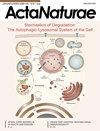RNAcontacts,一个通过RNA接近连接分析预测接触的管道
IF 2
4区 生物学
Q4 CELL BIOLOGY
引用次数: 1
摘要
高通量RNA接近连接法是一种同时分析活细胞中许多RNA空间接近性的分子方法。它们的原理是基于交联、碎片化和随后的rna虔诚,然后进行高通量测序。所产生的片段有两种不同类型的分裂,一种是由mrna前剪接引起的,另一种是由连接空间封闭的RNA链引起的。在这里,我们提出了rnaccontacts,这是一种在高通量RNA接近连接试验中检测RNA-RNA接触的通用管道。它避免了用两种不同的分裂类型绘制序列的固有问题,其中拼接连接是在第一次通过对照RNA-seq实验推断出来的,然后在第二次通过作为真正的内含子提供给比对者。与以前开发的方法相比,这种方法可以更灵敏地检测RNA接触,并且在生物样品中存在的剪接连接方面具有更高的特异性。rnaccontacts提取联系人,聚类他们的连接点,计算读取支持,并通过UCSC基因组浏览器生成可视化的轨迹。它是在一个可复制和可扩展的工作流管理系统Snakemake中实现的,该系统允许快速和统一地处理多个数据集。结论rnaccontacts是一种检测RNA接触的通用管道,只要其中一个相互作用的伙伴是RNA,就可以用于任何近距离连接方法。rnaccontacts可通过github访问https://github.com/smargasyuk/RNAcontacts/本文章由计算机程序翻译,如有差异,请以英文原文为准。
RNAcontacts, a pipeline for predicting contacts from RNA proximity ligation assays
Background High-throughput RNA proximity ligation assays are molecular methods that simultaneously analyze spatial proximity of many RNAs in living cells. Their principle is based on cross-linking, fragmentation, and consequent religation of RNAs followed by high-throughput sequencing. The generated fragments have two distinct types of splits, one resulting from pre-mRNA splicing, and the other resulting from ligating spatially close RNA strands. Findings Here, we present RNAcontacts, a universal pipeline for detecting RNA-RNA contacts in high-throughput RNA proximity ligation assays. It circumvents the inherent problem of mapping sequences with two distinct split types using a two-pass alignment, in which splice junctions are inferred from a control RNA-seq experiment on the first pass and then provided to the aligner on the second pass as bona fide introns. This approach allows for a more sensitive detection of RNA contacts and has higher specificity with respect to splice junctions that are present in the biological sample in comparison to previously developed methods. RNAcontacts extracts contacts, clusters their ligation points, computes the read support, and generates tracks for the visualization through the UCSC Genome Browser. It is implemented in a reproducible and scalable workflow management system Snakemake that allows fast and uniform processing of multiple datasets. Conclusions RNAcontacts represents a generic pipeline for the detection of RNA contacts that can be used with any proximity ligation method as long as one of the interacting partners is RNA. RNAcontacts is available via github at https://github.com/smargasyuk/RNAcontacts/
求助全文
通过发布文献求助,成功后即可免费获取论文全文。
去求助
来源期刊

Acta Naturae
农林科学-林学
CiteScore
3.50
自引率
5.00%
发文量
0
审稿时长
>12 weeks
期刊介绍:
Acta Naturae is an international journal on life sciences based in Moscow, Russia.
Our goal is to present scientific work and discovery in molecular biology, biochemistry, biomedical disciplines and biotechnology. These fields represent the most important priorities for the research and engineering development both in Russia and worldwide. Acta Naturae is also a periodical for those who are curious in various aspects of biotechnological business, innovations in pharmaceutical areas, intellectual property protection and social consequences of scientific progress. The journal publishes analytical industrial surveys focused on the development of different spheres of modern life science and technology.
Being a radically new and totally unique journal in Russia, Acta Naturae is useful to both representatives of fundamental research and experts in applied sciences.
 求助内容:
求助内容: 应助结果提醒方式:
应助结果提醒方式:


